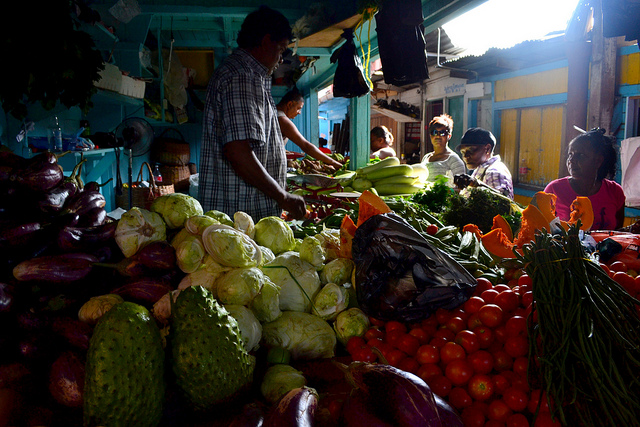Sustainable Agriculture in Guyana
 Guyana is one of the smallest countries in South America and a large portion of its population lives in poverty. One study found that nearly four in 10 people in Guyana live in poverty while almost two in 10 live in extreme poverty. Agriculture is the most important productive sector in the country, as it accounts for nearly one-third of Guyana’s Gross Domestic Product (GDP) and 30 percent of the country’s employment. Programs to aid sustainable agriculture in Guyana are crucial for its economic growth.
Guyana is one of the smallest countries in South America and a large portion of its population lives in poverty. One study found that nearly four in 10 people in Guyana live in poverty while almost two in 10 live in extreme poverty. Agriculture is the most important productive sector in the country, as it accounts for nearly one-third of Guyana’s Gross Domestic Product (GDP) and 30 percent of the country’s employment. Programs to aid sustainable agriculture in Guyana are crucial for its economic growth.
The volatility of international price rates and extreme weather changes challenge the Guyanese agricultural sector. However, this sector also has great growth potential in the country, and the Guyanese government and other foreign nations are investing in sustainable agriculture in Guyana.
The Food and Agriculture Organization
The Food and Agriculture Organization of the United Nations (FAO) has been working closely with the Guyanese government to promote sustainable agricultural systems and alleviate hunger and poverty.
Guyana’s 2012-2015 National Medium-Term Priority Framework, which is now known as the Country Programming Framework (CPF), is guiding the FAO’s assistance in the country. The CPF centers on four priority areas:
- Food security and nutrition
- Agricultural and rural development
- Renewable natural resources and climate change
- Agricultural health and food safety
Among its projects, FAO’s most successful initiative in Guyana’s agriculture sector aims to train people on how to respond to extreme climate change and natural disasters. Droughts and floods severely affect farmers and the agriculture sector in Guyana. The FAO assisted the Guyanese government in the formation of a Disaster Risk Management (DRM) Plan.
The project included training Ministry of Agriculture extension officers and other stakeholders in accordance with the FAO Livelihood Assessment Toolkit and a “full assessment of existing mechanisms for prevention, mitigation and preparedness, as well as response and recovery.” As a result, an informative report emerged to help the development of sustainable agriculture in Guyana. This project had success at the community level, and the Guyanese government has called on the FAO to help implement the DRM Plan in response to extreme climatic changes.
Other Projects for Sustainable Agriculture
Several other projects funded by foreign organizations are working to develop sustainable agriculture in Guyana. For instance, the International Fund for Agricultural Development (IFAD) funded Rural Enterprise and Development Project (READ) seeks to strengthen “intermediary service providers, institutions whose services add value to production and marketing systems and improve rural welfare.” In addition, the program works with rural communities to improve their capacity to capitalize on market opportunities.
Similarly, the Inter-American Development Bank (IDB) funded Agricultural Export Diversification Program (ADP) aims to establish institutions and services for a sustainable increase in the incomes from “the export of non-traditional agricultural exports in aquaculture, fruits and vegetables and livestock subsectors.” This project focuses on developing commodity chains on the nontraditional agricultural products in order to address Guyana’s export growth rate volatility.
Investment in sustainable agriculture in Guyana is crucial in order to boost productivity and sustainable use of resources in the country. Hopefully, with similar continued efforts, the country will be able to reduce poverty and promote food accessibility for everyone.
– Mehruba Chowdhury
Photo: Flickr
